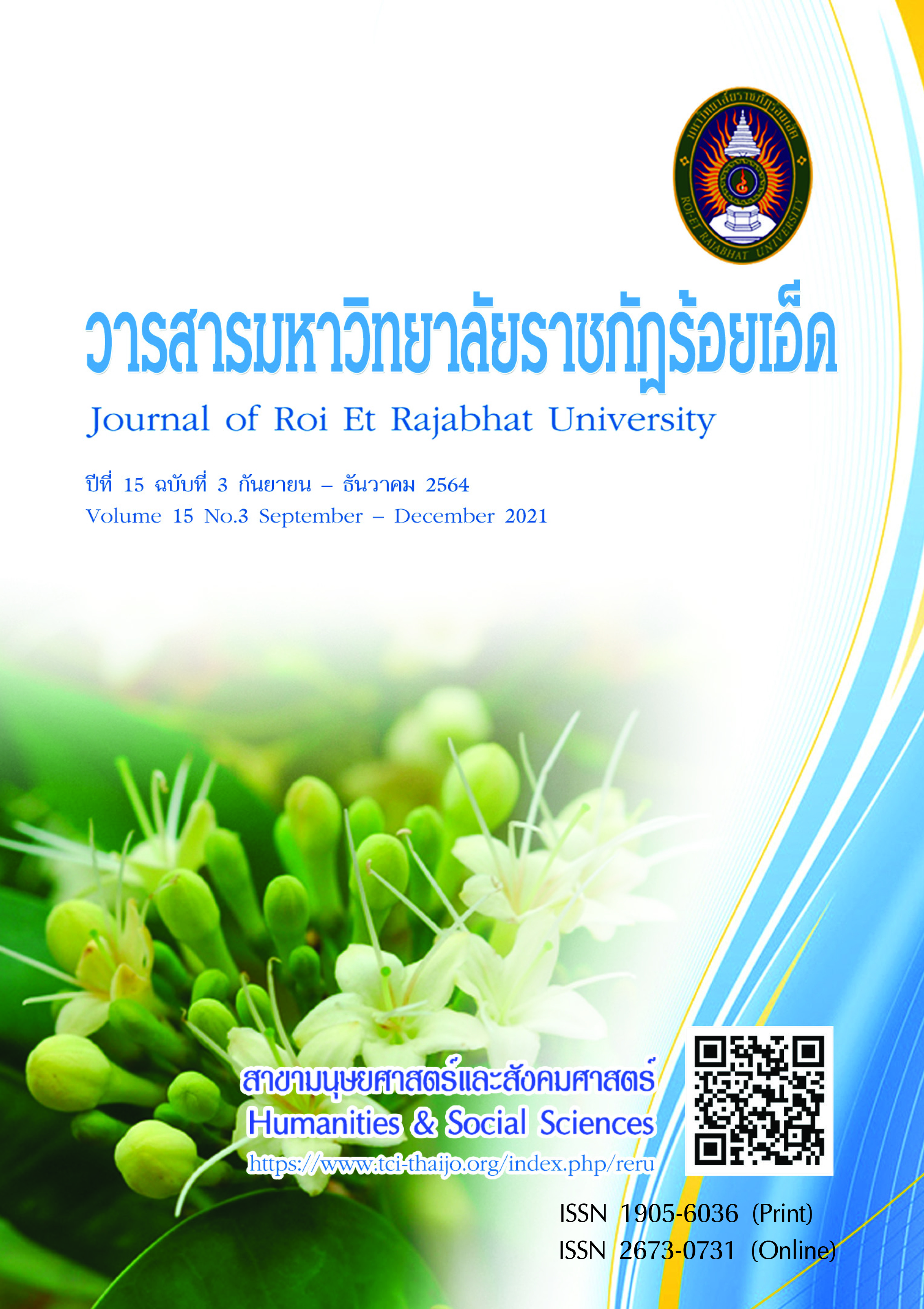The Effects of a Collaborative Learning Model using Storyline through LINE Application on Promoting Self-Care Behaviors in Patients with Coronary Heart Disease
Keywords:
Collaborative learning, storyline, self-careAbstract
The present study aimed to investigate the effects of a collaborative learning model using storyline through LINE application on promoting self-care behaviors in patients with coronary heart disease (CHD). The sample size were 40 patients who admitted at Surin Hospital in 2019. A randomized pretest-posttest control group design was performed. Collected data were analyzed by t-test, mean and standard deviation. The model of collaborative learning using storyline through line application was created based on patients’ needs and applied to use in the research. The results showed that a collaborative learning approach could improve self-care behaviors in treated patients. Statistical improvement in health-related quality of life were revealed in treated group with had no readmission to the hospital. This was not so obvious in the control group. Thus, implementation of a collaborative learning model using storyline through LINE application to promote self-care behaviors based on patients’ needs, supported by a healthcare team and led by nurses, is important in clinical practice.
References
Becker, M. H. (1974). The health belief model and personal health behavior. New Jersey: Charles B. Slack.
Clark, L.T., Bellam, S.V. ,Shah, A.H. and Feldman, J. G. (1992). Analysis of prehospital delay among inner-city patients with symptoms of myocardial infarction: implications for therapeutic intervention. Medical Association, 84(11), 931-937.
Dongpho, P. and Ua-Kit, N. (2018). Predicting factors of smoking cessation among patients with coronary artery disease at Thammasat University Hospital. Thammasat Medical Journal. 18 (1), 40-50.
Driscoll, M. (2020). Blended Learning: Let's get beyond the hype. Retrieved February 11, 2020, From https://www-07.ibm.com/services/pdf/blended_learning.pdf.
Ferrans, C. and Powers, M. (1998). Quality of Life Index Cardiac version-IV "Translated by Aem-orn Saengsiri 2003.”. Retrieved February 11, 2020, From http://qli.org.uic.edu/ questionaires/questionnairehome.htm
Ferrans, C. and Powers, M. (1985). Quality of Life Index: Development and psychometric properties. Advances in Nursing Science, 8, 15-24.
Johnson, D.W. and Johnson, F. (1991). Joining together: Group theory and group skills (4th ed.). Englewood Cliffs,
New Jersey: Prentice Hall.
Krajaiklang, S., Intaganok, P., Homkham, U. and Boonget, N. 2020. The development of collaborative learning with storyline by using LINE learning application for self-care skill of coronary heart disease patients. Doctor of Education. Information Communication and Technology for Education. Surindra: Surindra Rajabhat University.
Kunjitchueawong, S. (2013). "LINE - Communicating format on the creativity of Smartphone: Benefits and limits
of application. Executive Journal, 33(4), 42-54.
Leewattana, T., Isaramalai, S. and Punthusena, C. (2008). Basic conditioning factors, self-care agency, and quality of life of patients following open heart surgery. Songklanagarind Medical Journal, 26(2), 141-150.
Orem, D.E. (1991). Nursing: Concepts of practice. (4th ed.). St. Louis, Missouri: C.V. Mosby.
Pedcharat, W., Namjuntra, R., Binhosen, V. and Porapakkham, P. (2017). Effects of self-management program
on self-management behaviors and readmission of patients with heart failure after valvular heart surgery. Thai Journal of Cardio-Thoracic Nursing, 28(2), 38-51.
Ravn-Nielsen, L.V., Duckert, M.L., Lund, M.L., Henriksen, J.P., Nielsen, M.L., Eriksen, C.S., Buck, T.C., Pottegard, A., Hansen, M.R. and Hallas, J. (2018). Effect of an in-hospital multifaceted clinical pharmacist intervention on the risk of readmission. JAMA Internal Medicine, 178(3), 375.
Ritpetch, N. (2011). Relationships between symptom clusters, self-management, health value, sense of coherence and health-related quality of life in patients with percutaneous coronary intervention. Thesis Submitted in Partial Fulfillment of the Requirements for the Degree of Master of Nursing Science Program in Nursing Science Faculty of Nursing. Chulalongkorn University.
Ritklar, L., Wattana, C. and Kitipawong, P. (2012). Effects of a self-management program on self-managment behaviors, dyspnea, activities of daily living, and quality of life among patients with congestive heart failure. Nursing Journal, 39(1), 64-76.
Saengsiri, A. (2015). The factors influencing the self-care agency and quality of life of patients with coronary artery disease. Thai Journal of Cardio-Thoracic Nursing, 26(1), 104-118.
Siladet, C. (2002). Manual for writing lesson plans that focus on learners Primary level (New revised version). Bangkok: Mac.
Somsiri, V. and Susang, J. (2011). The effects of giving planned instruction on knowledge, perceived self care abilities and self-care behavior in coronary heart disease patients receiving percutaneous coronary intervention
at Songkhlanakarind hospital. Princess of Naradhiwas University Journal, 3 (3), 33-46.
Soomhirun, R., Monkong, S. and Khuwawatanasamrit, K. (2009). A literature review related to the management
for reducing readmission in patients with heart failure. Thai Journal of Cardio-Thoracic Nursing, 20(1), 17-32.
Slavin, R.E. (1990). Cooperative Learning: Theory, Research and Practice. New Jersey: Prentice - Hall.
Thai Heart Association of Thailand. (2014). Clinical practice guideline for ischemic heart disease (2nd ed.). Bangkok: Srimuang Publishers.
Downloads
Published
How to Cite
Issue
Section
License
บทความที่ได้รับการตีพิมพ์เป็นลิขสิทธิ์ของวารสารมหาวิทยาลัยราชภัฎร้อยเอ็ด
ข้อความที่ปรากฏในบทความแต่ละเรื่องในวารสารวิชาการเล่มนี้เป็นความคิดเห็นส่วนตัวของผู้เขียนแต่ละท่านไม่เกี่ยวข้องกับมหาวิทยาลัยราชภัฎร้อยเอ็ด และคณาจารย์ท่านอื่นๆในมหาวิทยาลัยฯ แต่อย่างใด ความรับผิดชอบองค์ประกอบทั้งหมดของบทความแต่ละเรื่องเป็นของผู้เขียนแต่ละท่าน หากมีความผิดพลาดใดๆ ผู้เขียนแต่ละท่านจะรับผิดชอบบทความของตนเองแต่ผู้เดียว





